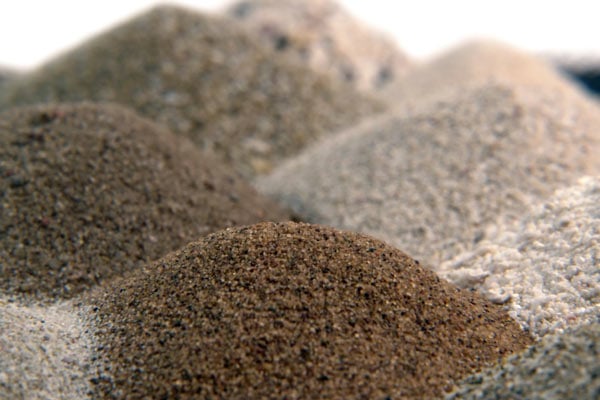With the United States oil and gas industry experiencing substantial growth, demand for frac sand has continued to rise; the increasing amount of sand employed per well, combined with longer lateral wells, has caused a surge in demand for the quartz sand unlike anything seen before.
In-basin sands, particularly in the Permian Basin, have become the latest trend as drillers look to reduce production costs by utilizing lower grades of locally available sand. FEECO has witnessed this first hand, supplying many in the industry with rotary dryers for their newly commissioned frac sand drying plants.
According to some industry experts, this in-basin sand trend has potential sources of frac sand in North Dakota – previously deemed unacceptable – being re-examined for use as a proppant in the hydraulic fracturing process.
The Evolving Needs of the Hydraulic Fracturing Industry
After the oil industry’s 2014 collapse, many producers began looking at ways to reduce drilling costs to make a profit on the slimmer margins of a recovering market. One option was to reduce the cost of frac sand by relying on more local supplies, instead of having it shipped in at a high expense.
“Northern White” sand was previously being brought in by rail from Midwestern states, but as drillers began to experiment with local sources of sand – available at significantly lower costs – they found it to be suitable in most cases, despite being of a lesser quality than Northern White. As the industry’s recovery took off into a full-blown boom, many producers have continued the use of these local sand supplies.
This has become an explosive trend in the Permian Basin in Texas, where frac sand mines and processing plants are cropping up all over the region to serve nearby wells. Now, geologists in North Dakota are investigating whether local sand sources could provide a similar model to serve the Bakken play as well, despite a previous study deeming the region’s sand as inferior for use as a proppant.
North Dakota’s Frac Sand Potential
North Dakota is home to the Bakken shale formation – one of the nation’s largest – in the Williston Basin. The success of the Bakken propelled North Dakota to achieve the title of the state with the lowest unemployment rate in the country.
North Dakota’s sand was previously examined for use as a proppant back in 2011 when the Bakken was in full swing. The 2011 study indicated that the sampled sand didn’t quite make the cut according to the high frac sand standards of the time. As a result, drillers continued to rely on imports. But now, with standards around frac sand loosening, researchers from the North Dakota Geological Survey (NDGS) are taking a second look at the sand, hoping it could meet the industry’s more relaxed standards for use as a proppant.
State Geologist Ed Murphy was quoted by the Bismarck Tribune as saying, “We want to classify these sandstones and get as much detailed information on them as possible because we never know. Something that may not work this year might work two, three, four years down the road.”
The ability to use locally sourced sand would be a potentially major cost savings – estimates say transportation can account for 40-65% of the cost of sand – and at the rate at which sand is used, this already-large savings can add up significantly.
According to industry expert (and author of the 2011 study), Fred Anderson, the USGS anticipates that demand for proppants in the Williston Basin are likely to exceed 100 million tons in order to fully exploit the Bakken/Three Forks reservoirs in North Dakota.
Such circumstances could potentially result in a similar rush to develop sand mines and processing plants like that seen in the Permian, though some industry experts anticipate consolidation in the industry as new production comes online, according to the Wall Street Journal. The Permian has seen a massive influx of frac sand mines and drying plants as sand suppliers look to cash in on the in-basin sand trend.
Northern White Sand Still Important
While lesser quality in-basin sand has become an industry norm, Northern White sand is still, and will continue to remain, an important proppant for the industry.
Lesser quality sands are sufficient in many settings, but not necessarily in all. As the highest quality sand available, Northern White offers the greatest crush strength, allowing it to withstand the increased pressures of greater well depths. If a proppant’s crush strength is too low, it can actually break down and clog fractures, substantially reducing, or even preventing the flow of hydrocarbons.
Furthermore, some drillers are hesitant to make the switch to a lesser-quality sand.
Northern White is also still especially critical in the near-term while infrastructure for supplying in-basin sand catches up to the insatiable demand.
Conclusion
The explosive demand for sand, combined with relaxed standards around frac sand have caused geologists in North Dakota to re-evaluate potential frac sand sources previously deemed inferior. Depending on the outcome of the ongoing research, it looks like the Bakken could be the next shale formation to take advantage of the in-basin sand trend, saving drillers substantial costs in transportation and prompting a wave of new frac sand processing plants in the region.
FEECO provides the industry’s best frac sand dryers. Our robust rotary dryers also offer many benefits over fluid bed dryers, are highly customizable, and offer high-capacity functionality. For more information on our frac sand dryers, contact us today!



